THE COOK, THE THIEF, HIS WIFE & HER LOVER Explained
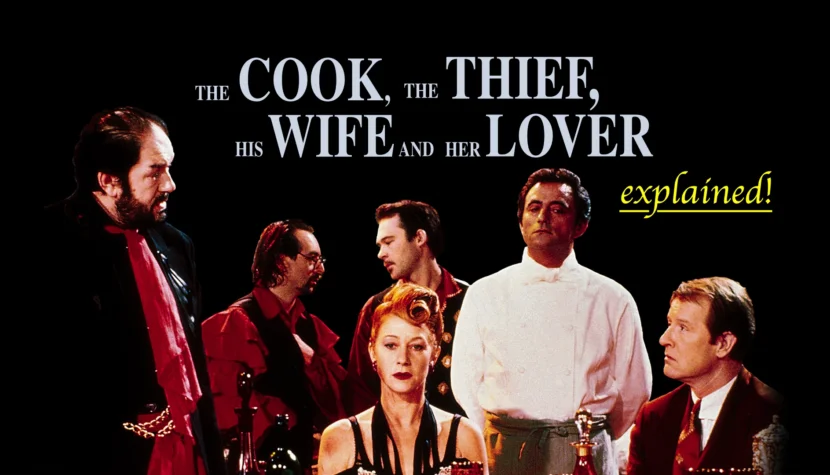
The characters playing the main roles in this grotesque, brutal drama with its baroque, exaggerated style are listed in the film’s title. Their actions and the relationships between them are the main axis of the plot and its driving force.
It is worth noting the reversed order of rooms in the restaurant. Not once do we see the front entrance to Le Hollandais; the characters always enter and exit from the kitchen side. The dominant color of this room is the previously mentioned green. The entire room is bathed in a greenish light, although the people working there—the titular cook, Richard, and his numerous kitchen assistants—are dressed in white. The color of the characters’ clothing changes from blue to green as they enter this room. Georgina’s dress takes on an olive hue, while the sashes of Albert and his gang become distinctly dark green. Upon crossing the threshold of the kitchen, the mood and atmosphere of the room also change. For the first time, music appears—Pup sings an operatic aria accompanied by a non-diegetic choir. This music creates an impression of sanctity, a transition from the realm of the profane (the street) to the sacred. The use of classical music, which will always accompany this room, turns the space into a church, a sacred place. It is a temple of culinary art, with the titular cook as its master. This is his kingdom. Richard cleverly mocks Albert’s crudeness, responding to his rudeness and malice with sarcasm and irony.
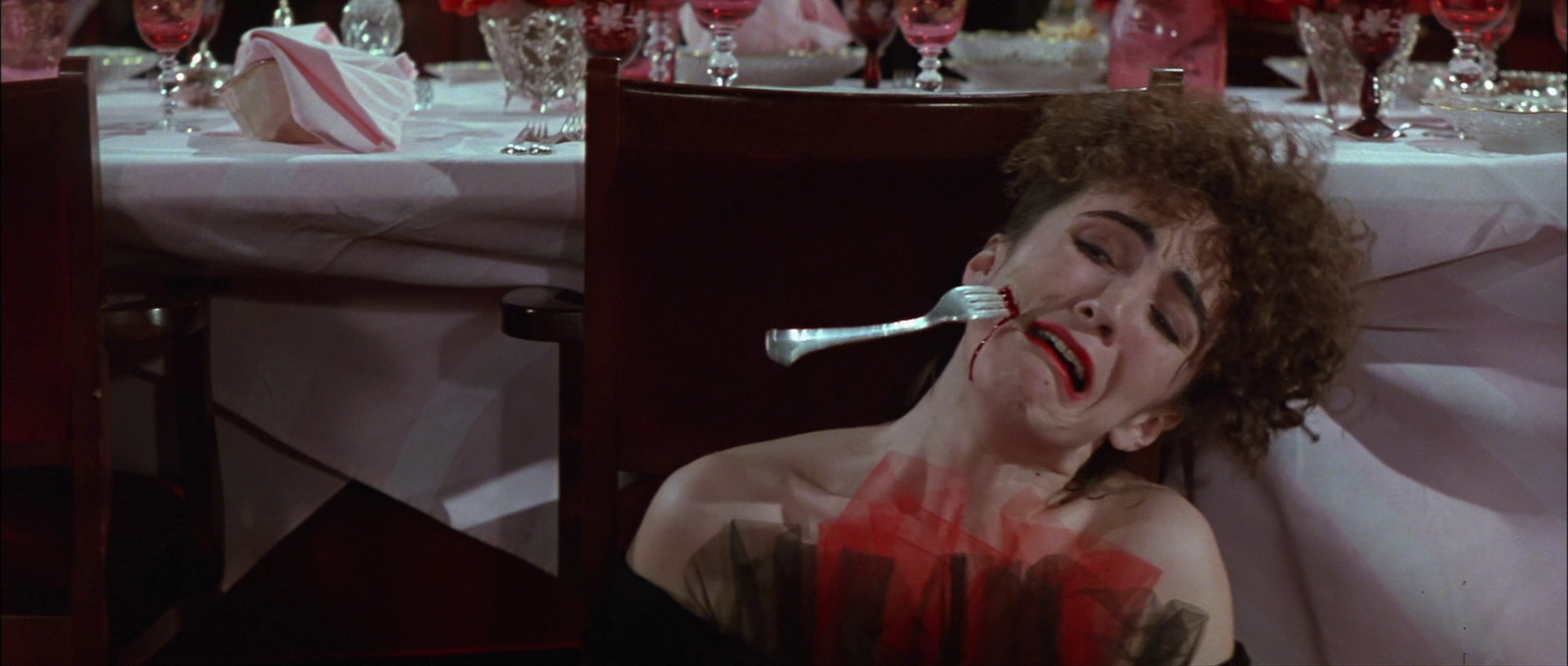
The cook does not allow himself to be dominated, and Albert never uses violence against him—it seems that to some extent, he respects Richard. The cook also has a certain degree of autonomy; the kitchen is his kingdom, where the thief does not attempt to rule. Richard’s superiority over Albert comes from his knowledge and expertise in the culinary arts. He prepares all the dishes, and Albert does not interfere with the cooking process. Richard prepares special dishes for Georgina and Michael, different ones for Albert. In doing so, the cook establishes his own order, deciding what to serve to whom. Therefore, the kitchen, Richard’s kingdom, will later become a refuge for Georgina and Michael. It is here, among the food and the sounds of chopping, mixing, and sharpening knives, that they make love and talk for the first time. The space, which does not belong to Albert, is safe for them—at least for a time. When the thief learns about his wife’s affair, he demolishes the kitchen. When Georgina later returns to the restaurant to ask Richard to prepare Michael’s body, the kitchen is deserted. This also shows how important the main character is to this space. There is a bond of understanding between her and the cook. Your wife has an excellent palate, Mr. Spica, Richard says to Albert. The cook creates special dishes for her and values her opinion—when Georgina is in the kitchen, he lets her taste the dishes and even allows her to influence their preparation.
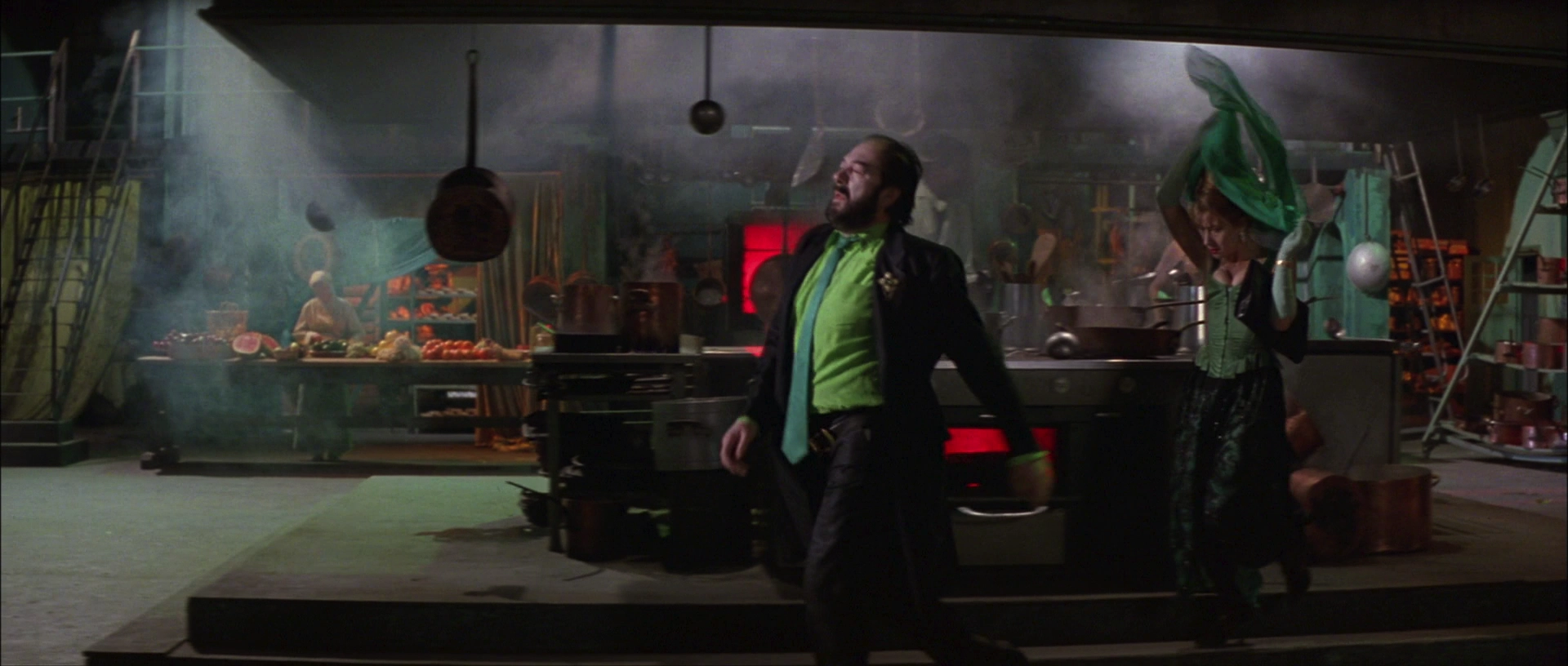
Waiters frequent the kitchen who—like Pup and the kitchen assistant in the earlier street sequence—wear colors associated with the space to which they belong. In the blue scene, Pup and the assistant are bathed in green light; the waiters entering the kitchen are dressed in red outfits. When Pup visits the hiding Georgina and Michael much later, he will wear clothing from two different Le Hollandais spaces—green pants and a red waiter’s jacket.
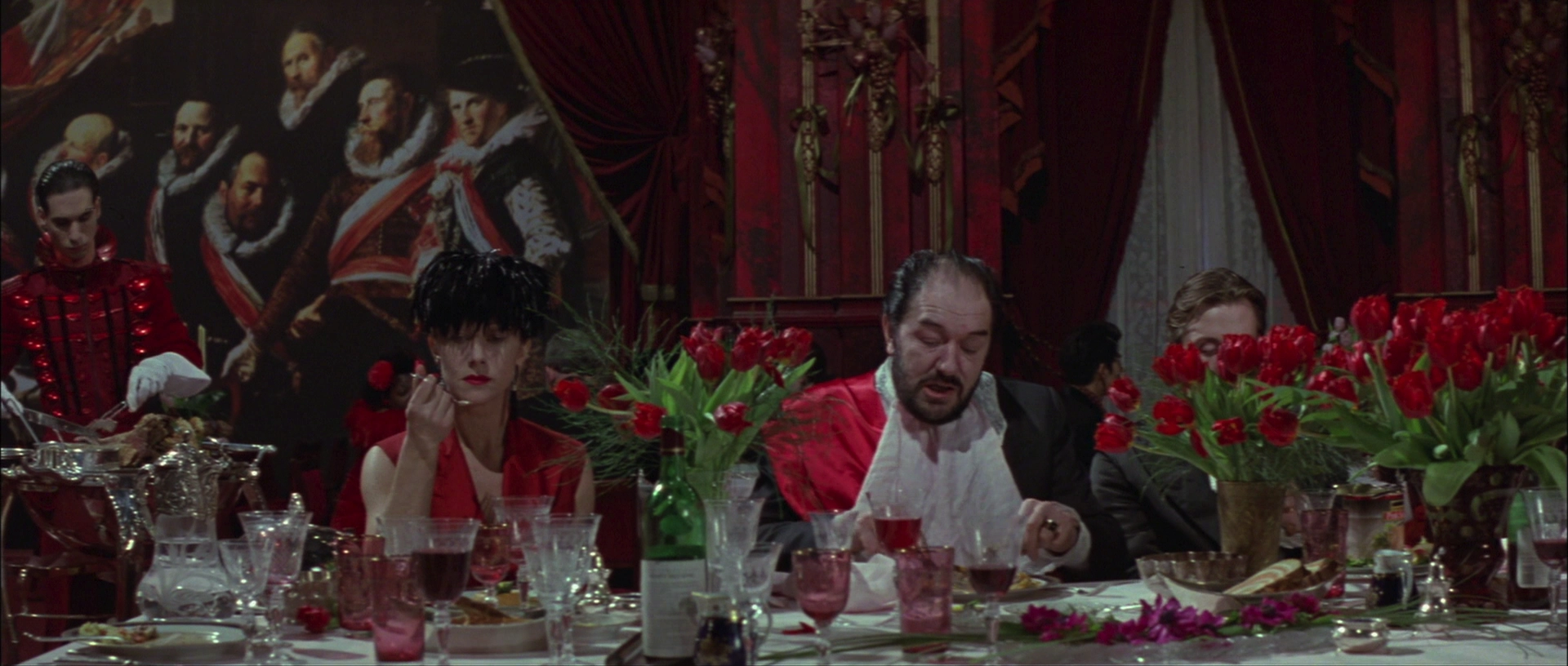
Red is the dominant color of the dining room. Here, Georgina’s dress changes color from olive to red, and the men’s sashes turn red. The clothes or clothing elements of other restaurant guests are also red. The walls, floor, curtains, tablecloths, and tulips on the tables are red. The room is sumptuous, slightly baroque. This is the space ruled by Albert. At the table, where practically no one but him speaks, he delivers endless tirades. The ubiquitous red underscores his explosive, cruel, and aggressive temperament. It is in this room that Georgina meets Michael. Unlike the main characters and the people present in the dining room, he is dressed in a brown suit. The color of his outfit does not change when he follows Georgina into the white bathroom or hides with her in the kitchen. His entire apartment is also maintained in various shades of brown. Even when he is dead and cooked by the chef, his body is brown.
In the bathroom, the color of Georgina’s dress turns white, as does Albert’s sash when he searches for her there multiple times. It seems that the bathroom is a place where the protagonist feels relatively safe; it is a space assigned to her. The room emanates calm and gentleness. The decor does not match the slightly kitschy, overly elegant dining room. The bathroom is ascetic and orderly. It is here that Georgina and Michael’s first intimate encounter occurs. In this context, white may symbolize the authenticity, purity, and sincerity of the lovers’ feelings.
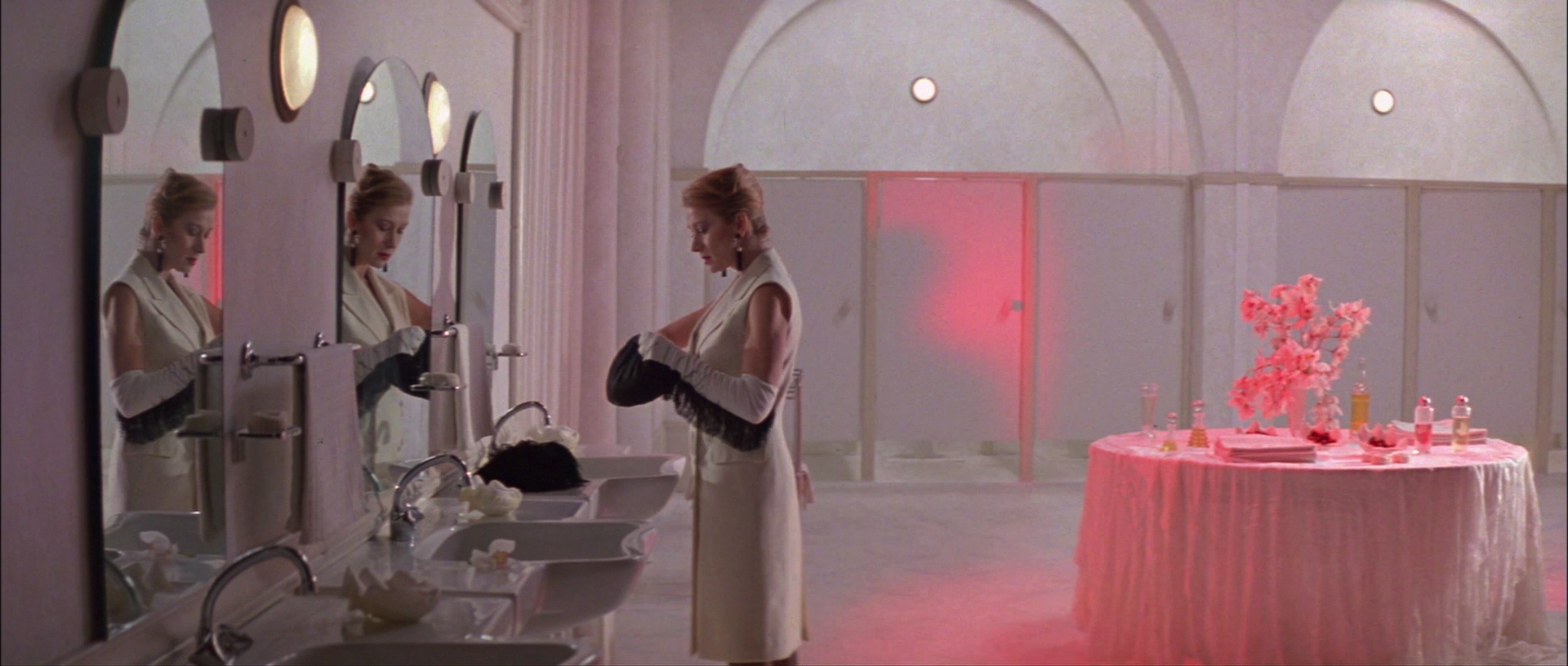
It seems that the color of the characters’ clothing illustrates their personalities and serves to show the transformations they undergo. All characters under Albert’s strong, direct influence, like Georgina or his gang, wear clothes whose colors change as they move from one room to another. These characters are subordinated to him, becoming like him. Even Georgina’s cigarettes, which seem to be a means of expressing resistance against Albert’s tyranny, become blue, green, red, and white in different rooms.
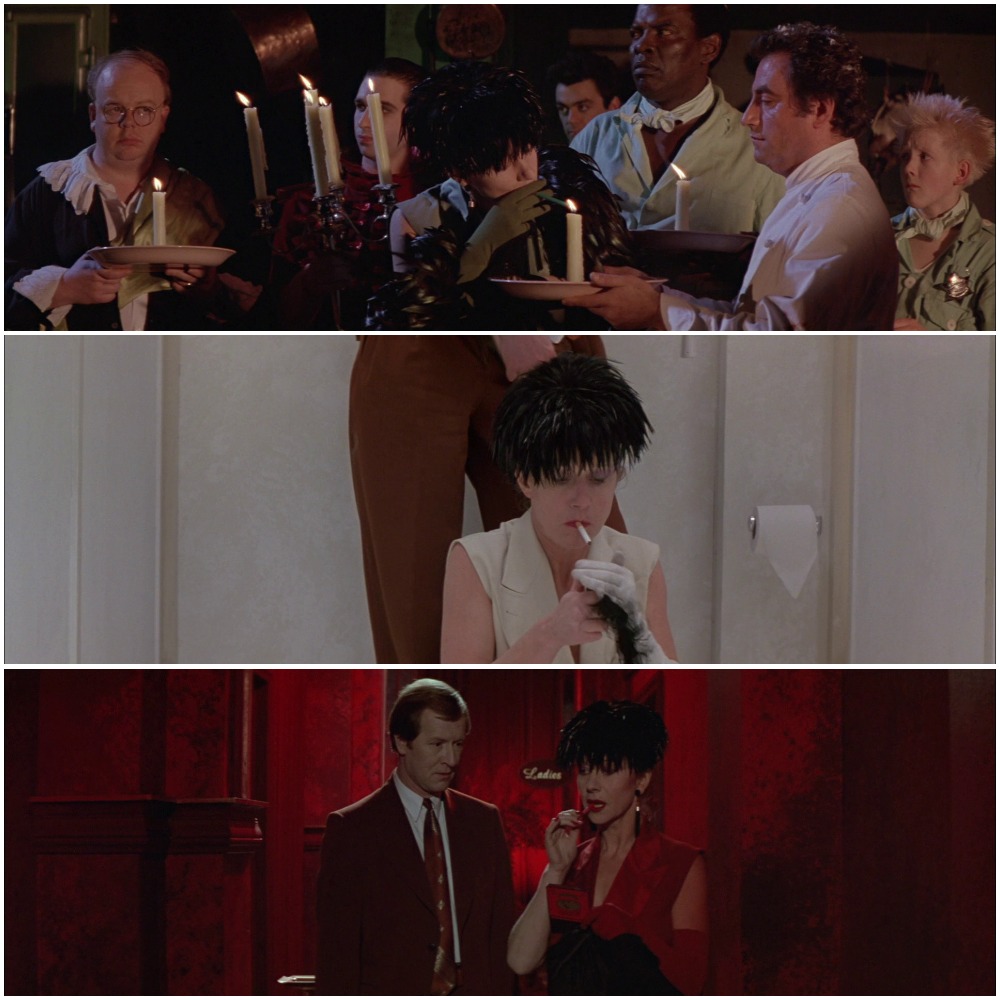
The only characters immune to Albert’s influence are the lover and the cook. Michael’s brown suit does not change, indicating his composure and constancy. The bookseller does not succumb to outside influences and remains himself throughout the film. In his apartment, the curtains, books, bed, sheets, blanket, and robe he gives Georgina are all brown. There is no natural light in the entire film, yet its only potential source is seen in Michael’s apartment—the sun rises and sets behind a large window. The protagonist has a positive influence on Georgina, for whom an affair with a caring and understanding man offers a chance to escape her husband’s tyranny. In his apartment, she is naked, unburdened by the colorful, elegant clothes she wore in the restaurant. Her hair falls on her shoulders, loose and unkempt. Michael pulls her out of the oppressive order of the restaurant, ruled by Albert.
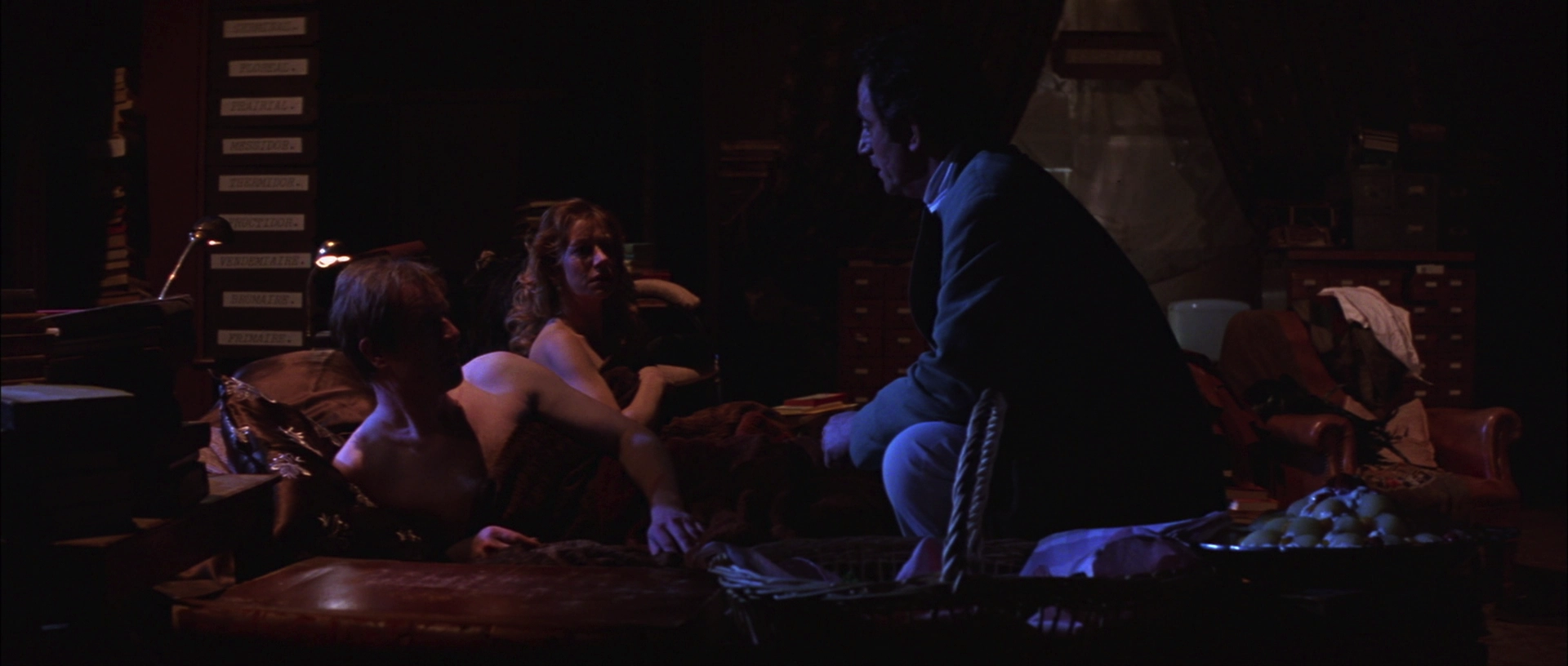
Richard’s outfit, on the other hand, is always white, the uniform of a chef. However, in the final scene, he wears a black suit and a white shirt. This marks the protagonist’s transformation; he is no longer the thief’s servant. From a passive observer, he becomes an active participant. Georgina also transforms from a victim to an aggressor, as do all those whom Albert had bullied.
Numerous references to painting, also common in other films by Peter Greenaway, are significant dominants of the film The Cook, the Thief, His Wife & Her Lover. The previously mentioned static frames and the wide shot distance evoke associations with painting. The director is primarily inspired by Dutch painting, which is evident in the composition of frames showing still lifes made of fish and seafood, meat, and dead birds. 17th-century Dutch painting often had a moralizing dimension, reminding of the temporality of life on earth, in line with the motto vanitas vanitatum. This was exemplified by peeled lemons about to spoil, present on the table where Albert and his gang feast. This can be read as a critique of Albert’s gluttony and food waste. Perhaps the lemons also foreshadow Albert’s impending death, which the conceited and self-assured protagonist does not anticipate.
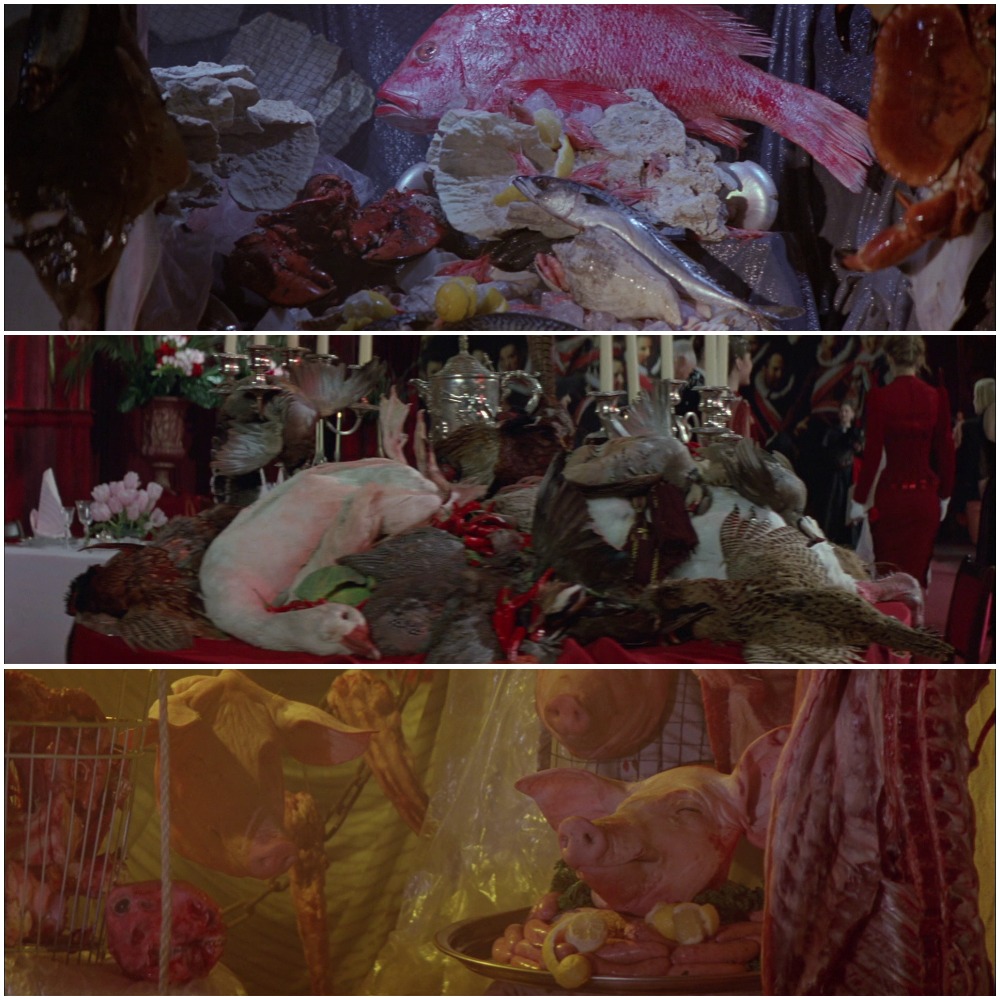
The most significant artistic context for the creation of the characters is the large painting hanging on the restaurant wall. It is The Banquet of the Officers of the St. George Civic Guard from 1616 by Frans Hals, a Dutch painter and an excellent portraitist. Such group portraits were characteristic of the Netherlands at the time and were called Schuttersstuk. Already in the first scene, one can notice that Albert and his gang members wear outfits inspired by 18th-century Dutch costumes. Their resemblance to the men depicted in Hals’s painting is hard to miss when, in the dining room, their sashes turn red, just like in the painting.
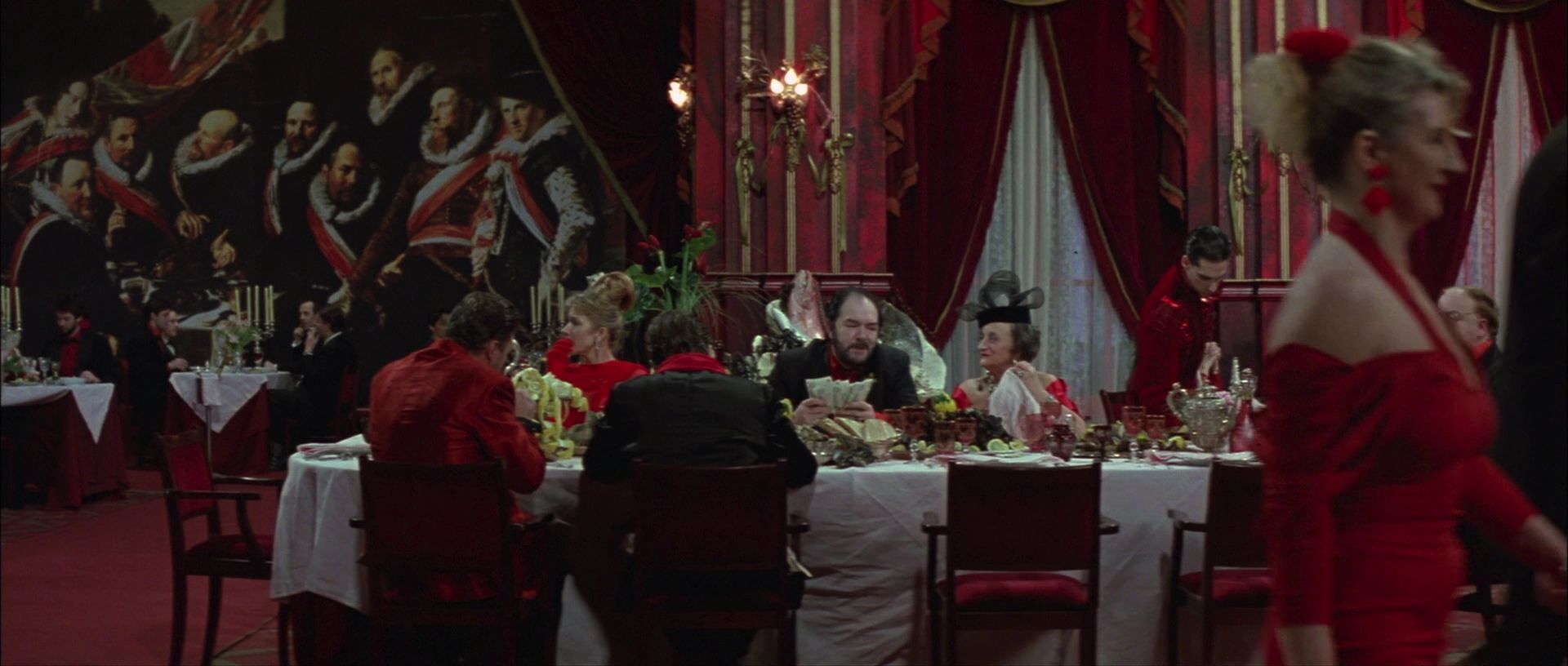
Schuttersstukken depicted members of the civic guard, who were not professional soldiers but volunteered for the community. They were usually respected individuals, townsmen, representatives of the middle class. Such paintings were meant to emphasize the unity and friendship among the brotherhood members. The genesis and success of this kind of painting are associated with the social and collective sense of the Dutch, who achieved so much primarily thanks to solidarity and voluntary associations, wrote art historian Maria Rzepinska. In this context, juxtaposing the painting on the wall with the thief’s wife, thief, and his gang sitting at the table gains an ironic tone. There are no positive values in this group; these people do not share sincere and friendly relations. Through his brutality and aggression, the thief creates an atmosphere of fear. The wife cheats on the thief with her lover, and the cook and eventually everyone in the thief’s entourage betray the criminal by siding with his wife.
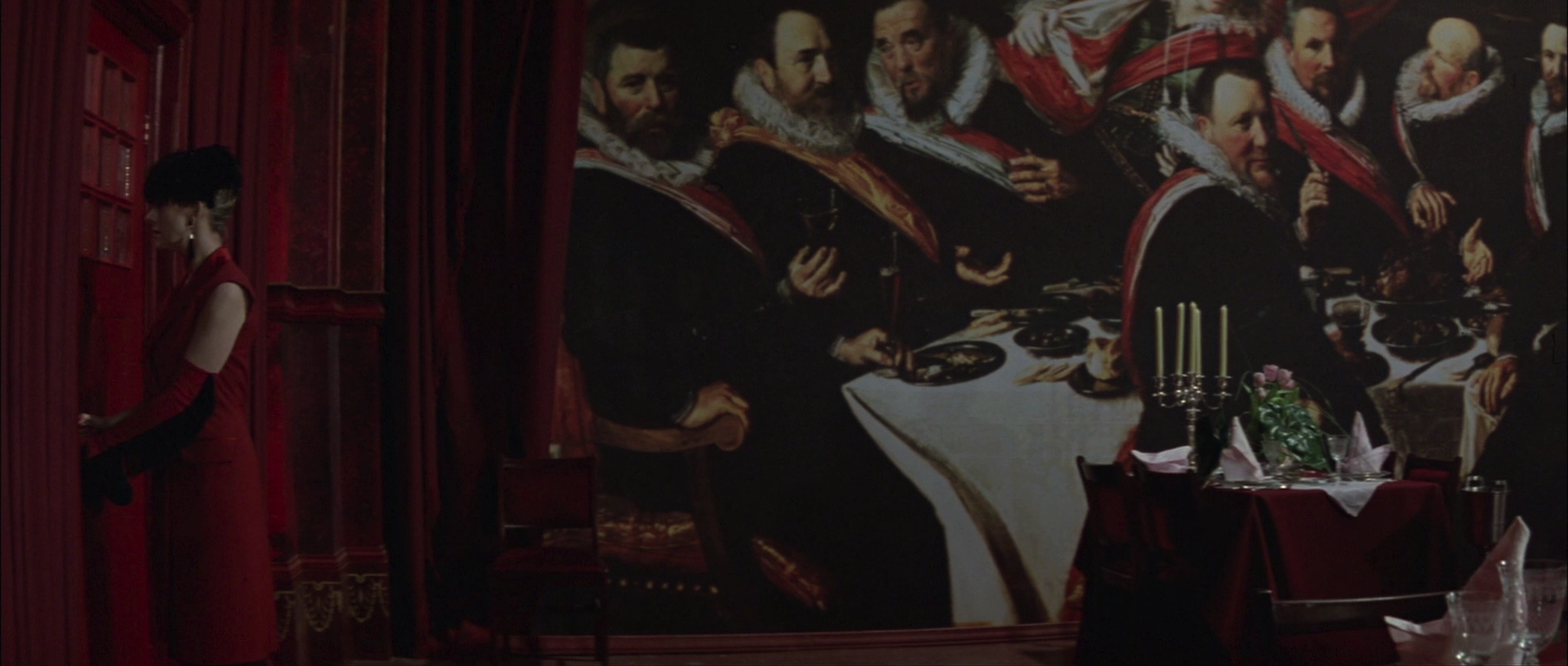
Peter Greenaway skillfully creates his characters using the spatial construction, showing their personality traits and transformations. Specific spaces are assigned particular colors, and these spaces belong to individual characters. The framing and camera work introduce a theatrical feel, build distance, and skillfully create spaces within the film.

